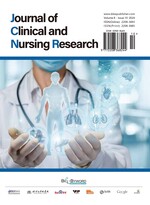Abstract
Objective: To analyze the value of emergency rescue nursing intervention in the care of patients with traumatic hemorrhagic shock and its impact on the success rate of rescue efforts. Methods: A total of 80 patients with traumatic hemorrhagic shock were selected as samples, with the timeframe from July 2022 to July 2023. The patients were randomly divided into two groups using a random number table method. Group A received emergency rescue nursing, while Group B received routine nursing care. The success rate of rescue, rescue indicators, complication rates, and family satisfaction with nursing care were compared between the two groups. Results: The rescue success rate in Group A was higher than in Group B (P < 0.05); the total blood loss in Group A was less, and the rescue time, full transportation time, and hospitalization time were shorter than in Group B (P < 0.05); the complication rate of patients with traumatic hemorrhagic shock in Group A was lower than in Group B (P < 0.05); the family satisfaction with emergency nursing care in Group A was higher than in Group B (P < 0.05). Conclusion: Emergency rescue interventions for patients with traumatic hemorrhagic shock can reduce blood loss, shorten rescue times, and improve the success rate of shock rescue, providing a safe and effective approach.
References
Zhu YQ, 2022, Evaluation of Prehospital Emergency Treatment Effect of Traumatic Shock Patients. Chinese Science and Technology Journal Database: Medicine and Health, 3(12): 32–34.
Hu D, Ji J, Han S, 2021, Analysis of the Value of Using Shock Index as a Guide for Assessing Patients with Severe Trauma Combined with Hemorrhagic Shock in Emergency Surgery. Shanxi Medical Journal, 50(19): 2749–2751.
Wu Y, 2022, Study on the Clinical Effect of Applying Emergency Nursing Care to Comatose Patients with Cerebral Hemorrhage. Chongqing Medicine, 51(1): 351–353.
Liu J, Wang Y, 2019, Application Analysis of Standardized Emergency Care in Emergency Critical Care Patients’ Resuscitation. Modern Digestive and Interventional Diagnosis and Treatment, 24(2): 2725–2726.
Zhang M, Guo R, 2022, Research on the Impact of Medical and Nursing Integration Emergency Care Process on The Resuscitation Success Rate of Patients with Acute Myocardial Infarction. Guizhou Medicine, 46(5): 836–837.
Zhu X, Li Y, Zhou M, et al., 2023, Effect of Systematic Nursing Care Based on Emergency Process Reconstruction on The Rescue of Polytrauma Patients. Modern Journal of Integrative Medicine, 32(1): 125–128.
Tang F, Gao H, 2023, Effect of Emergency Interventional Nursing Process on Enhancing the Success Rate of Resuscitation in Patients with Acute ST-Segment Elevation Myocardial Infarction. Chinese Journal of Emergency Resuscitation and Disaster Medicine, 18(2): 250–253.
Wang J, 2021, Effect of Emergency Interventional Nursing Process on Enhancing The Success Rate of Resuscitation in Patients with Acute ST-Segment Elevation Myocardial Infarction. Henan Medical Research, 30(29): 5520–5523.
Wang Y, Zhou X, 2023, Resuscitation Effect of Prehospital 120 Emergency Medical Care Combined with Seamless In-Hospital Care for Patients with Traumatic Shock. Shanxi Medical Journal, 52(19): 1497–1500.
Wang Q, Huo W, 2022, Optimization of Emergency Nursing Process on Emergency Resuscitation Effect on Patients with Severe Trauma Hemorrhagic Shock. Shanxi Medical Journal, 51(13): 1553–1555.
